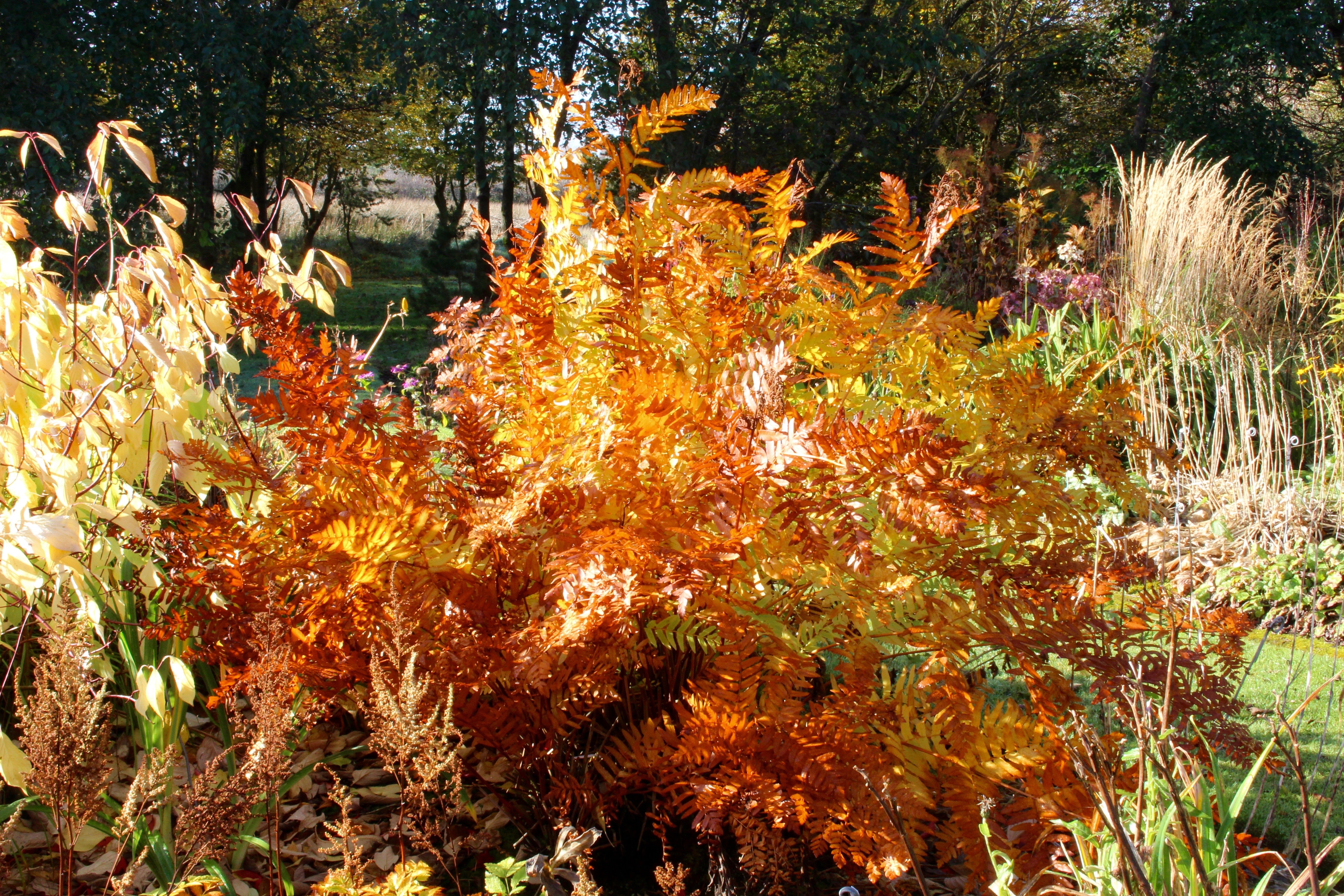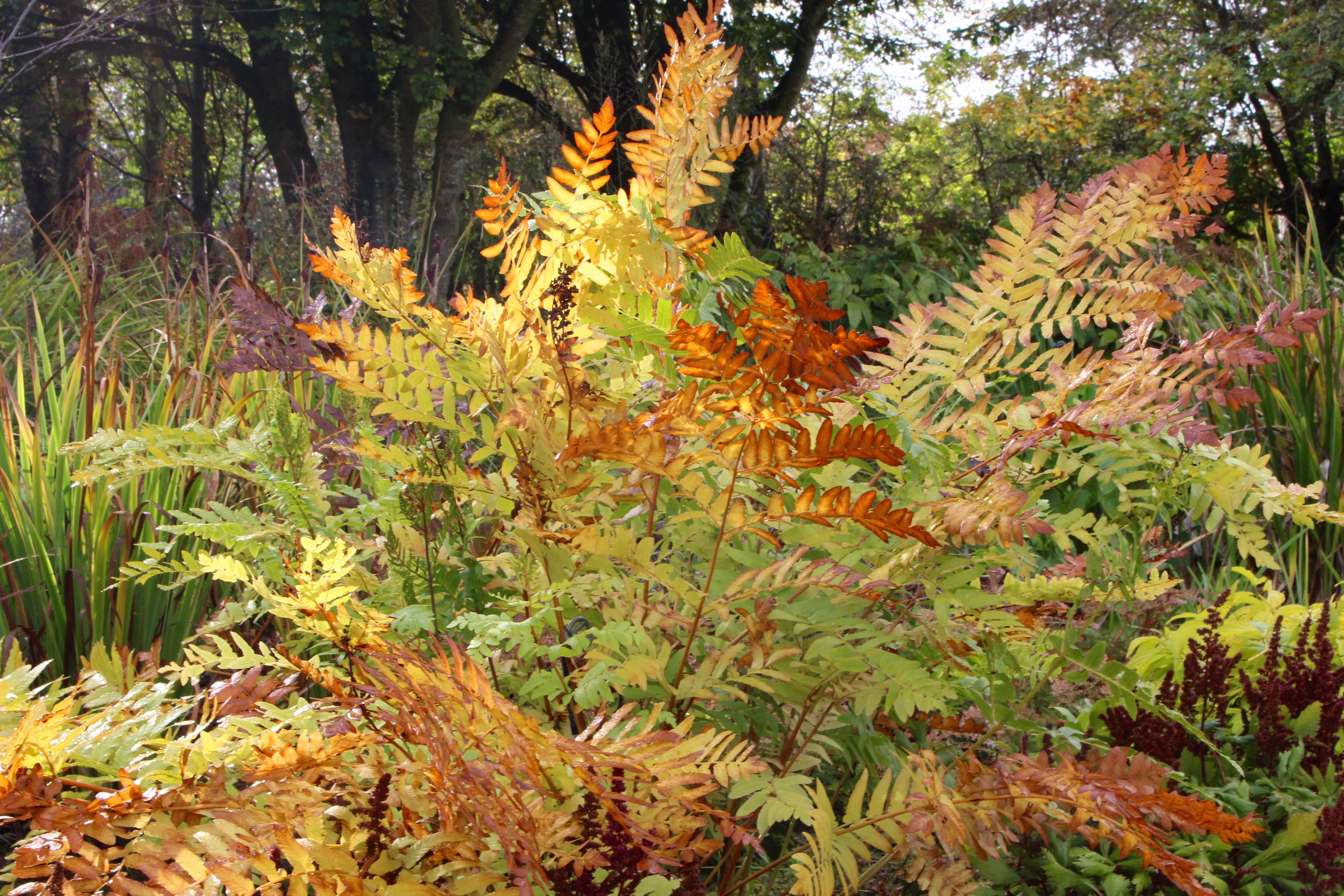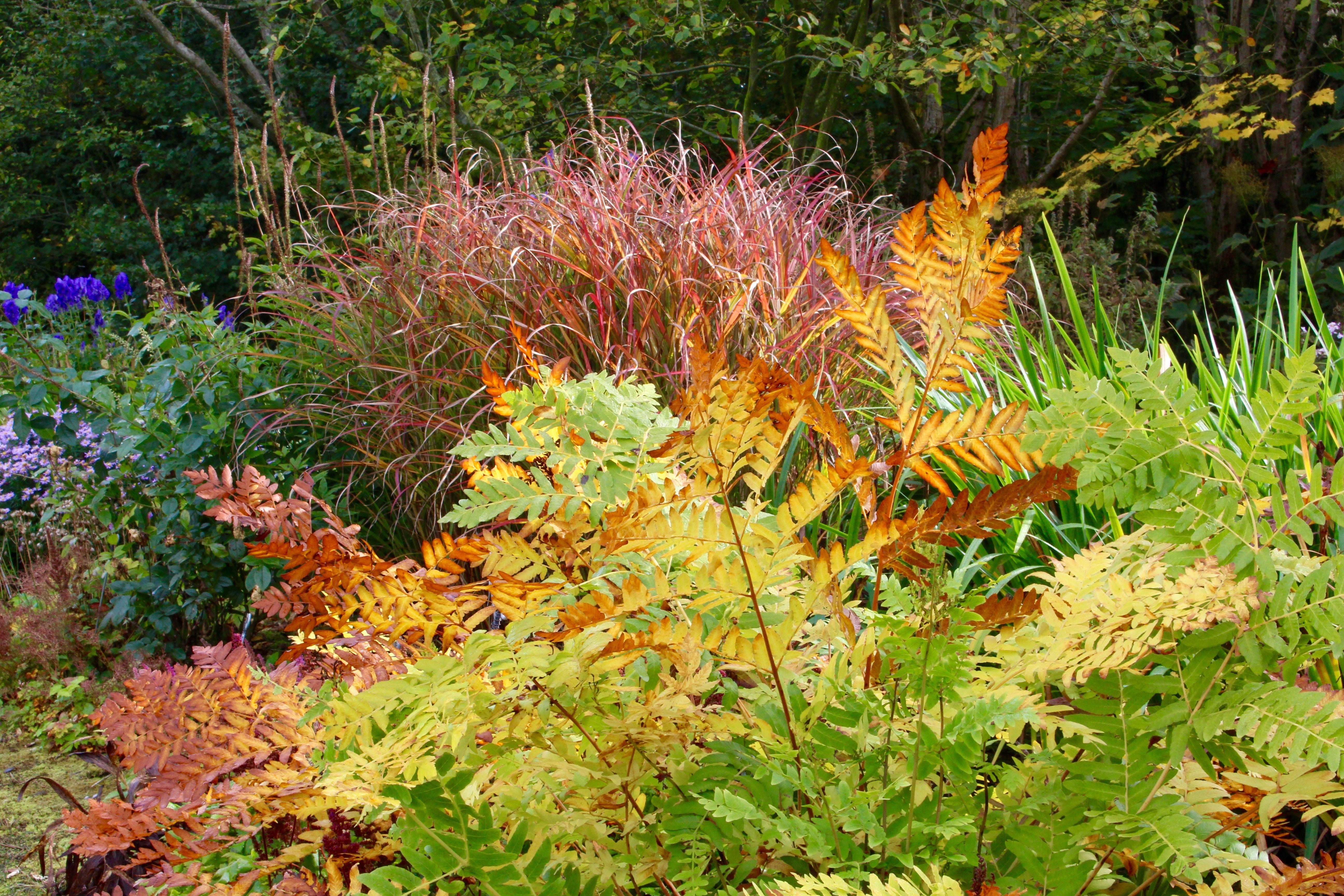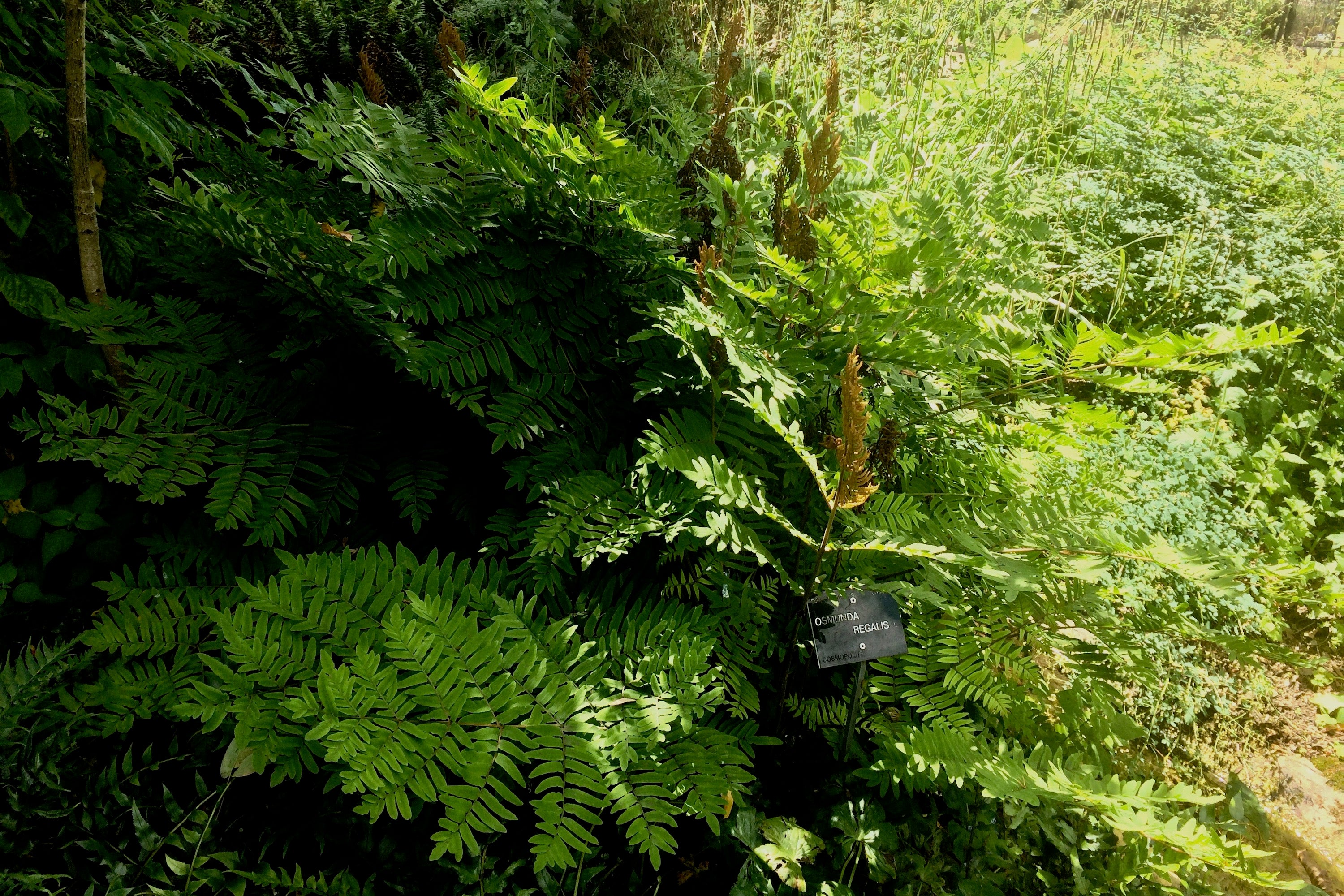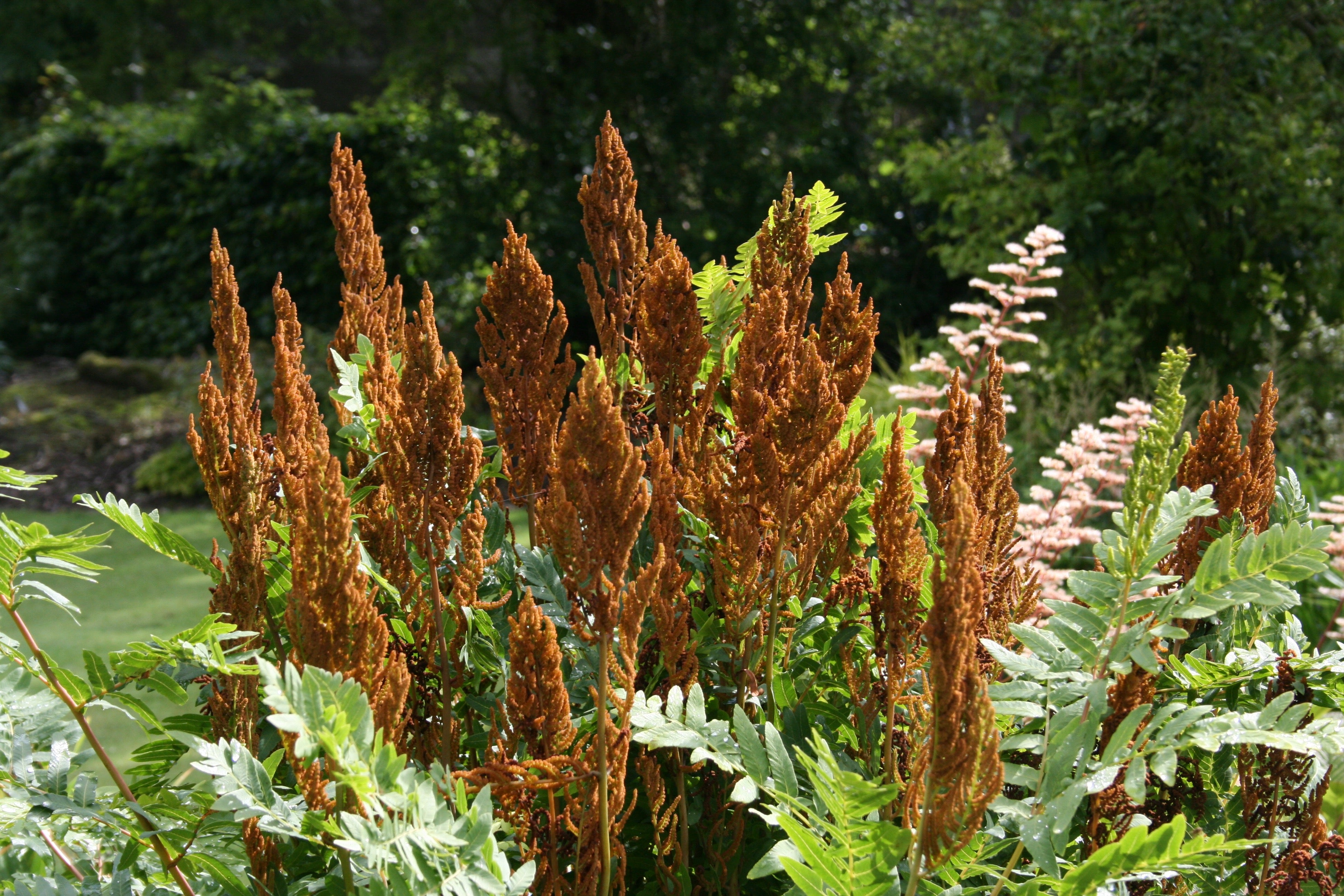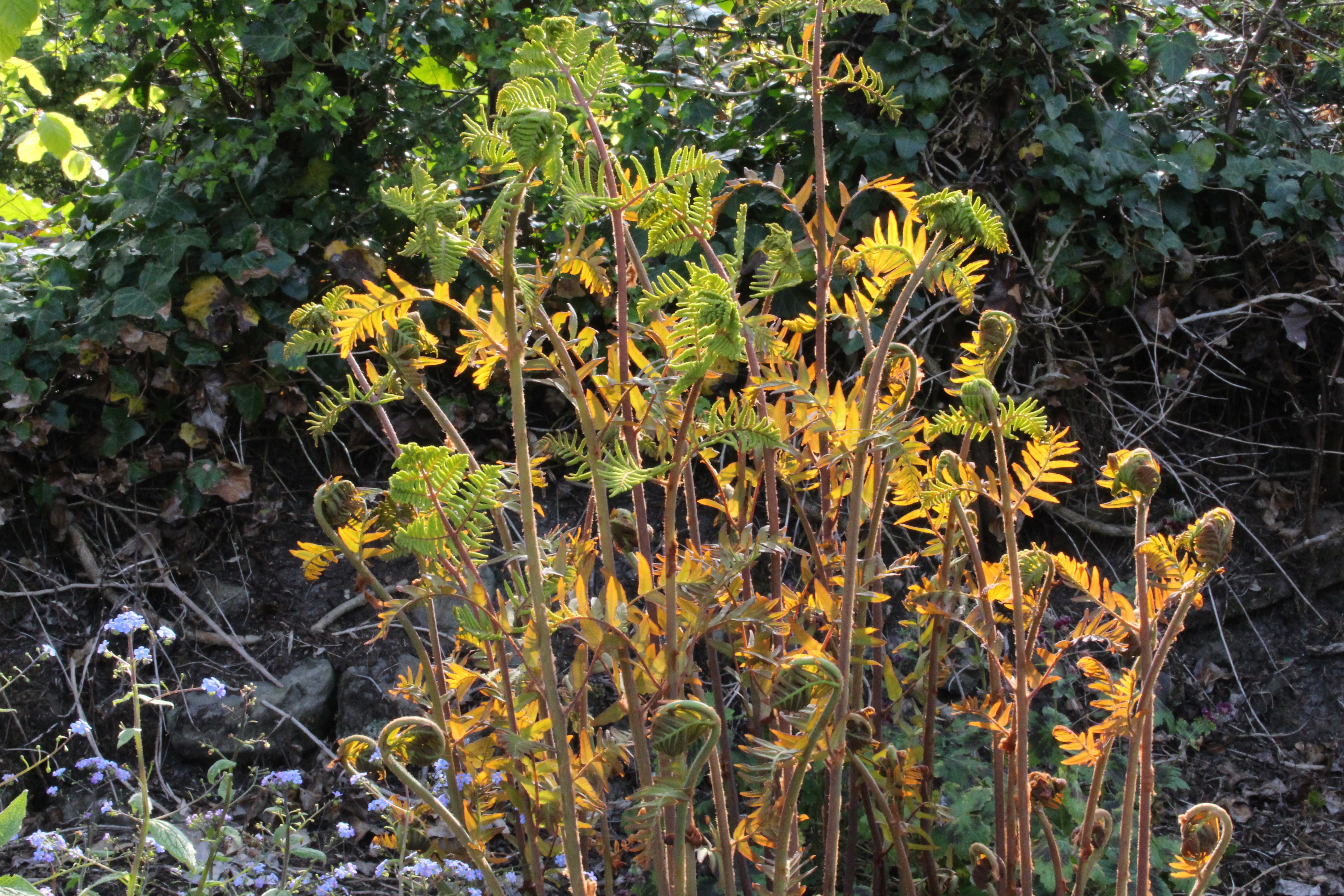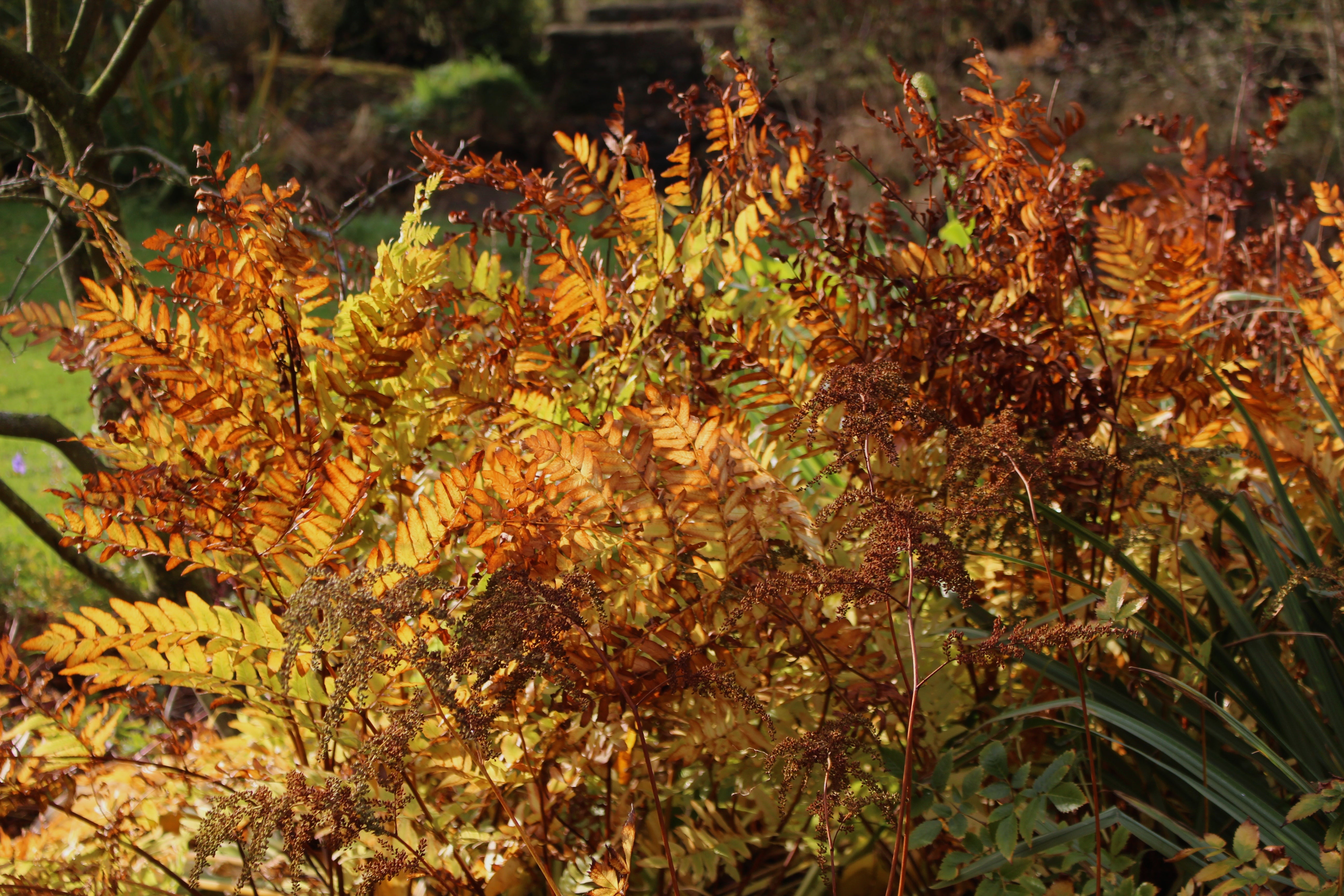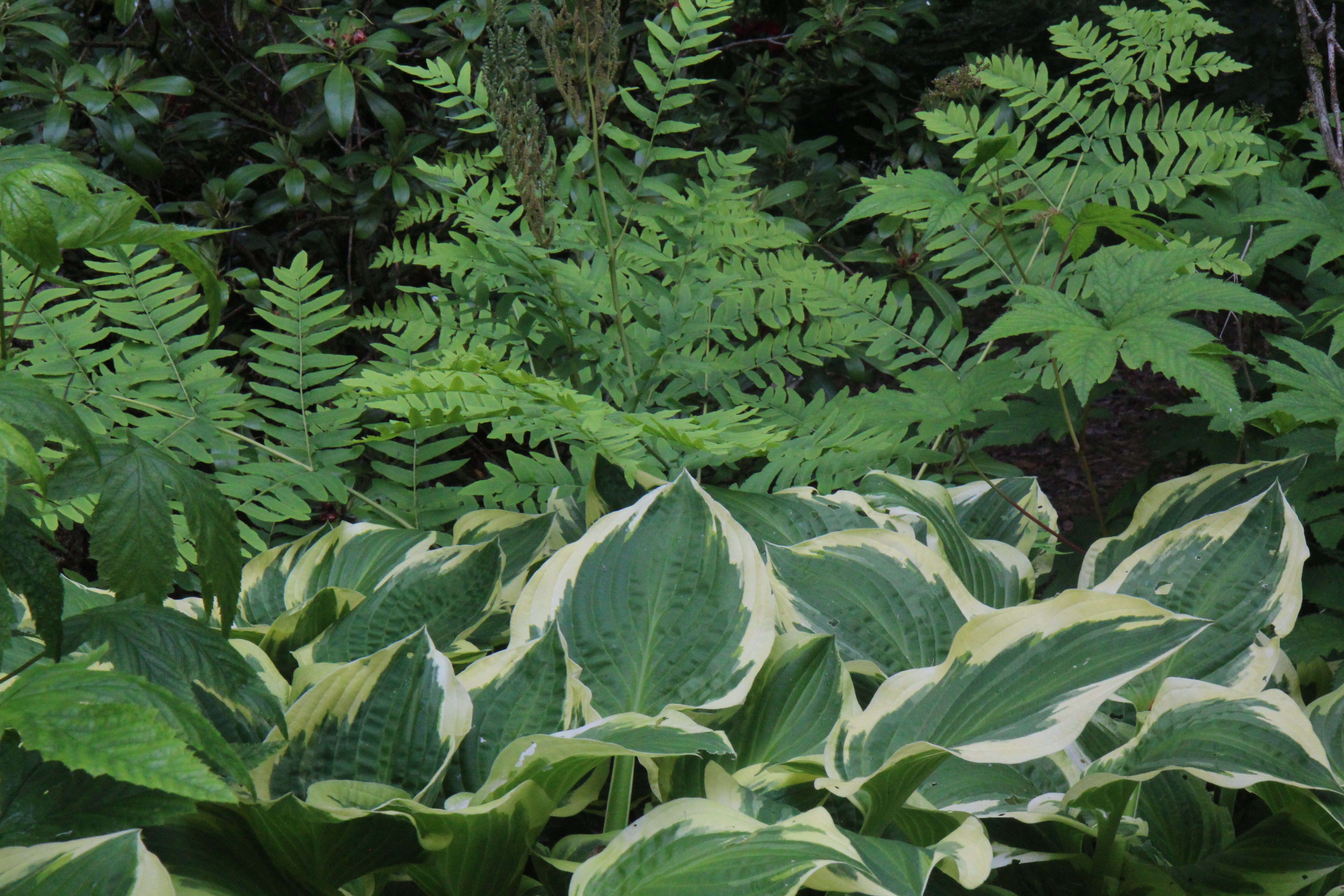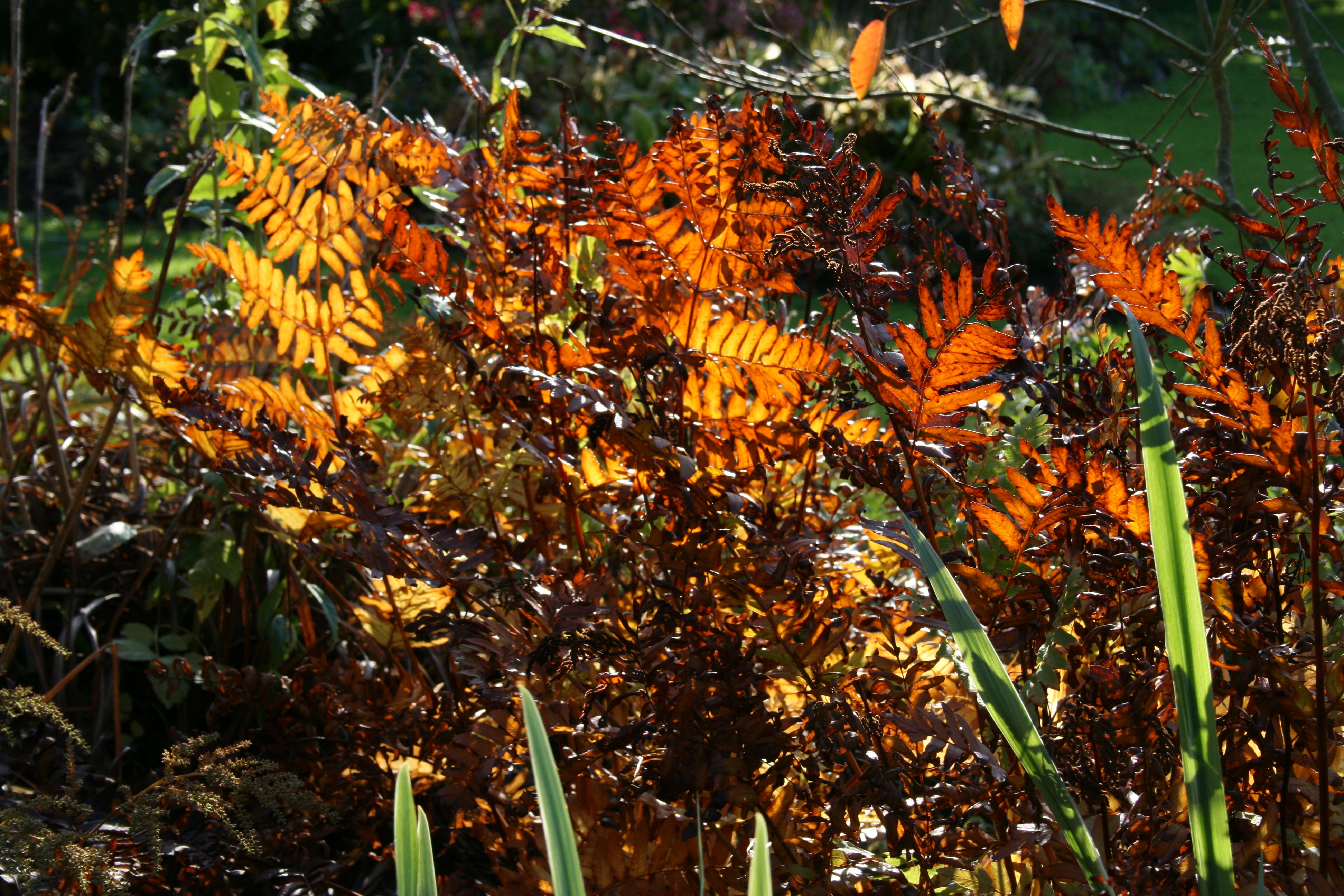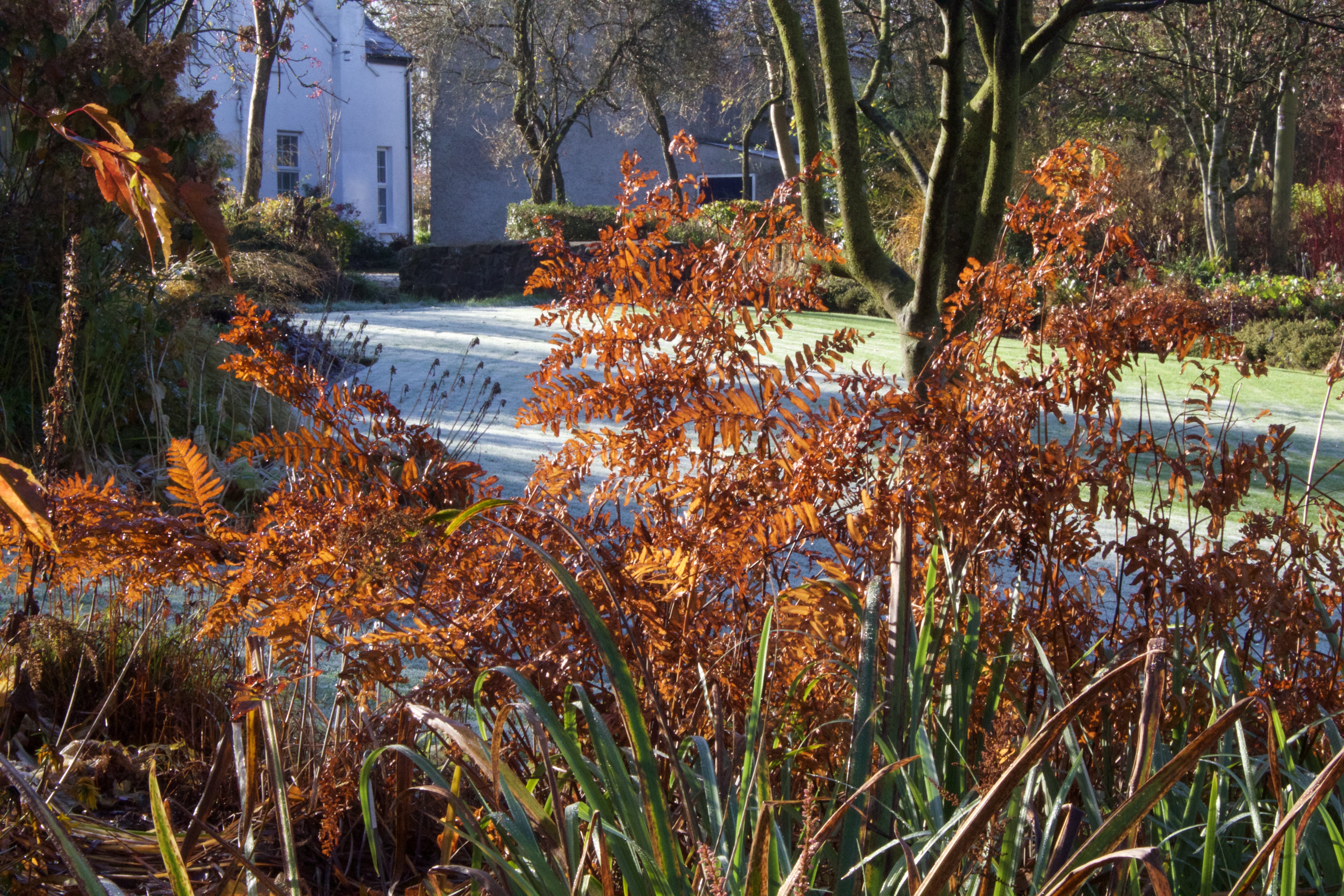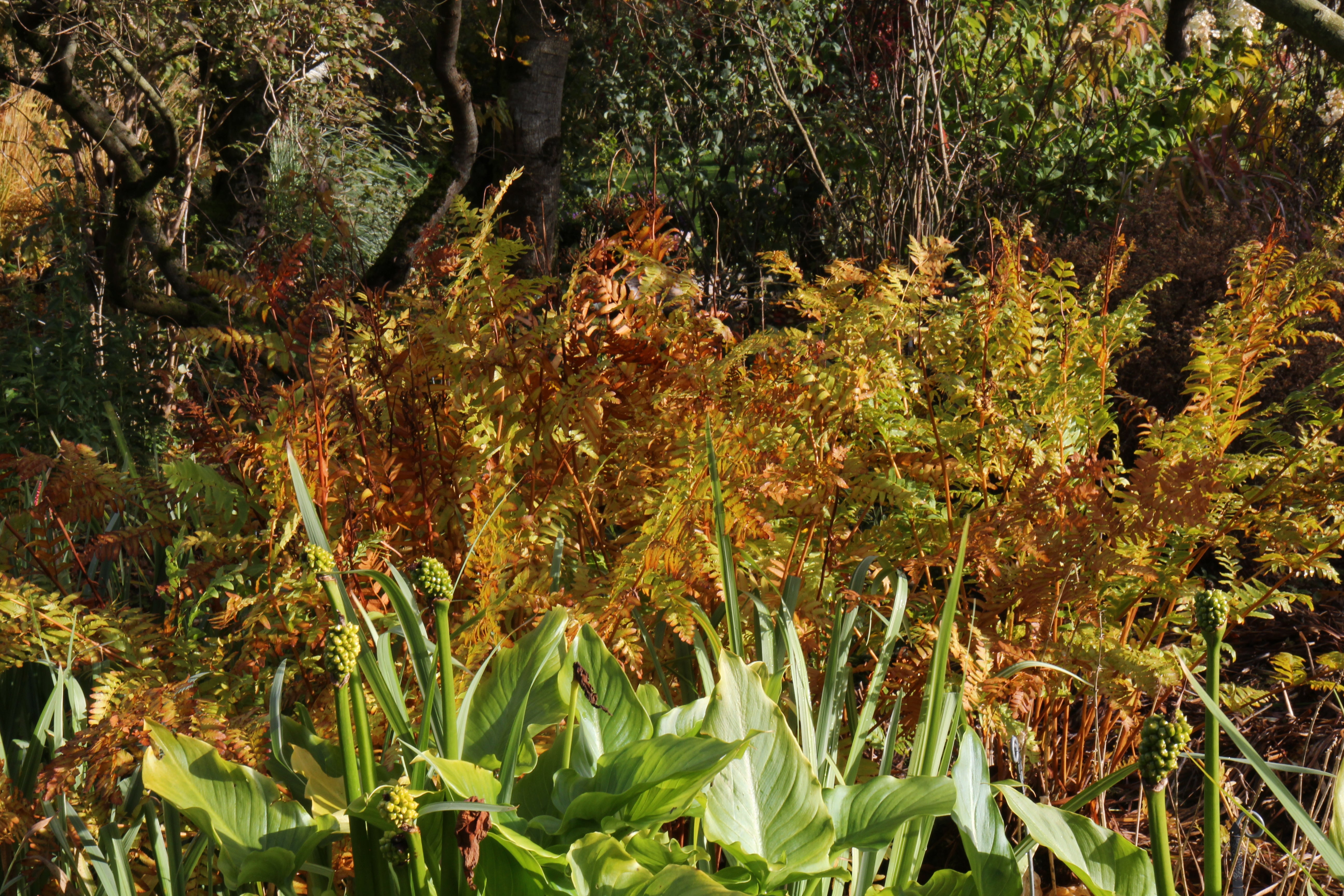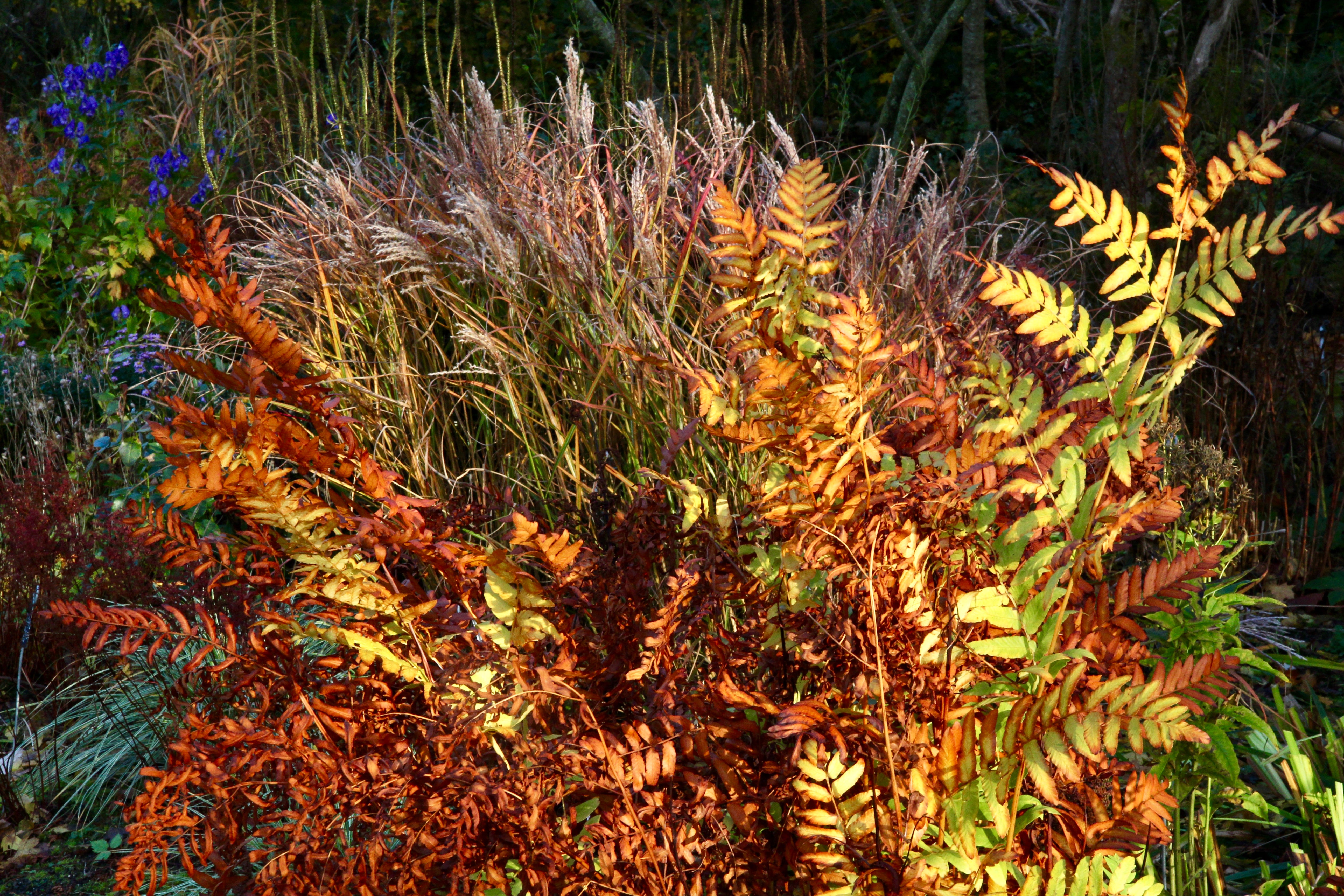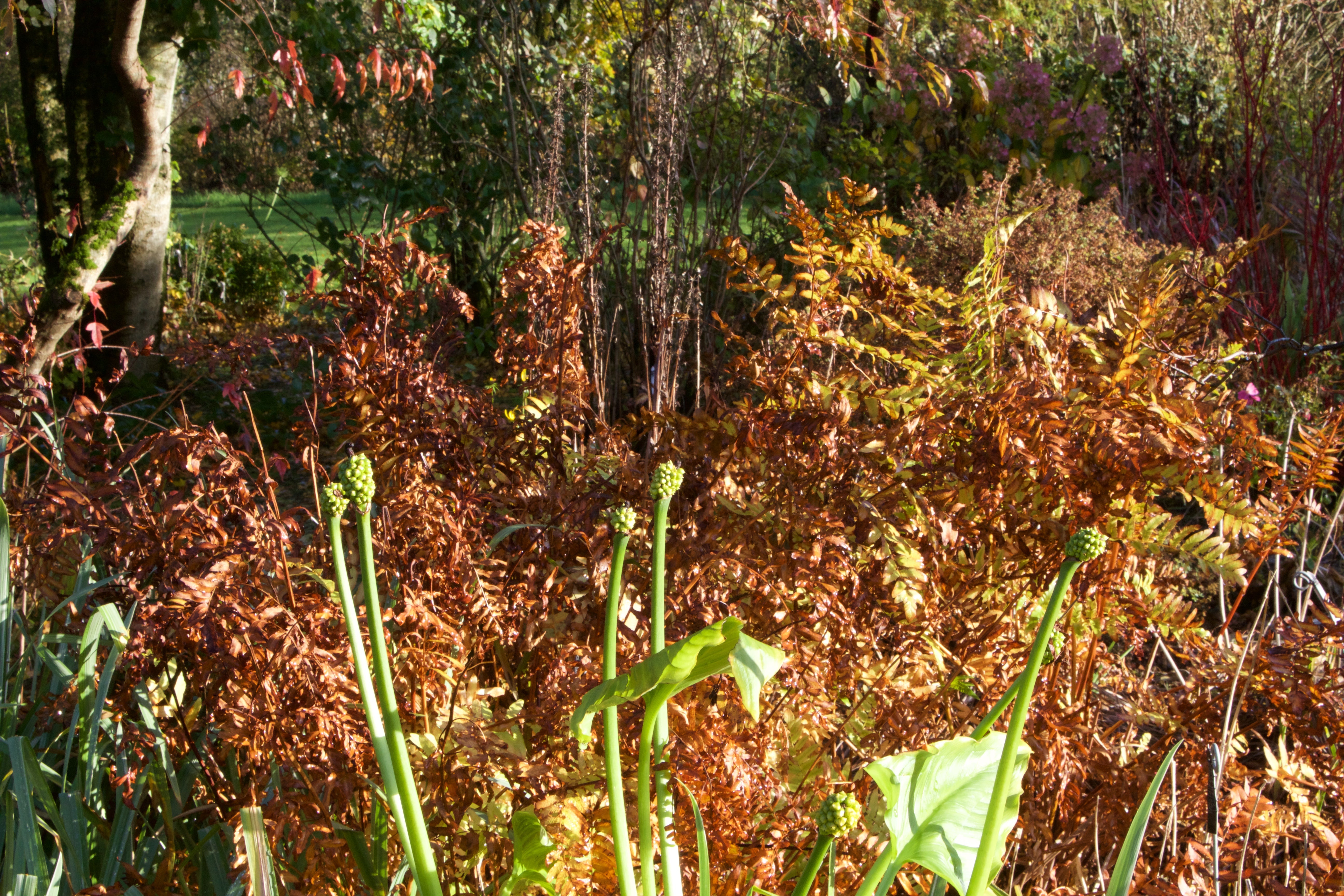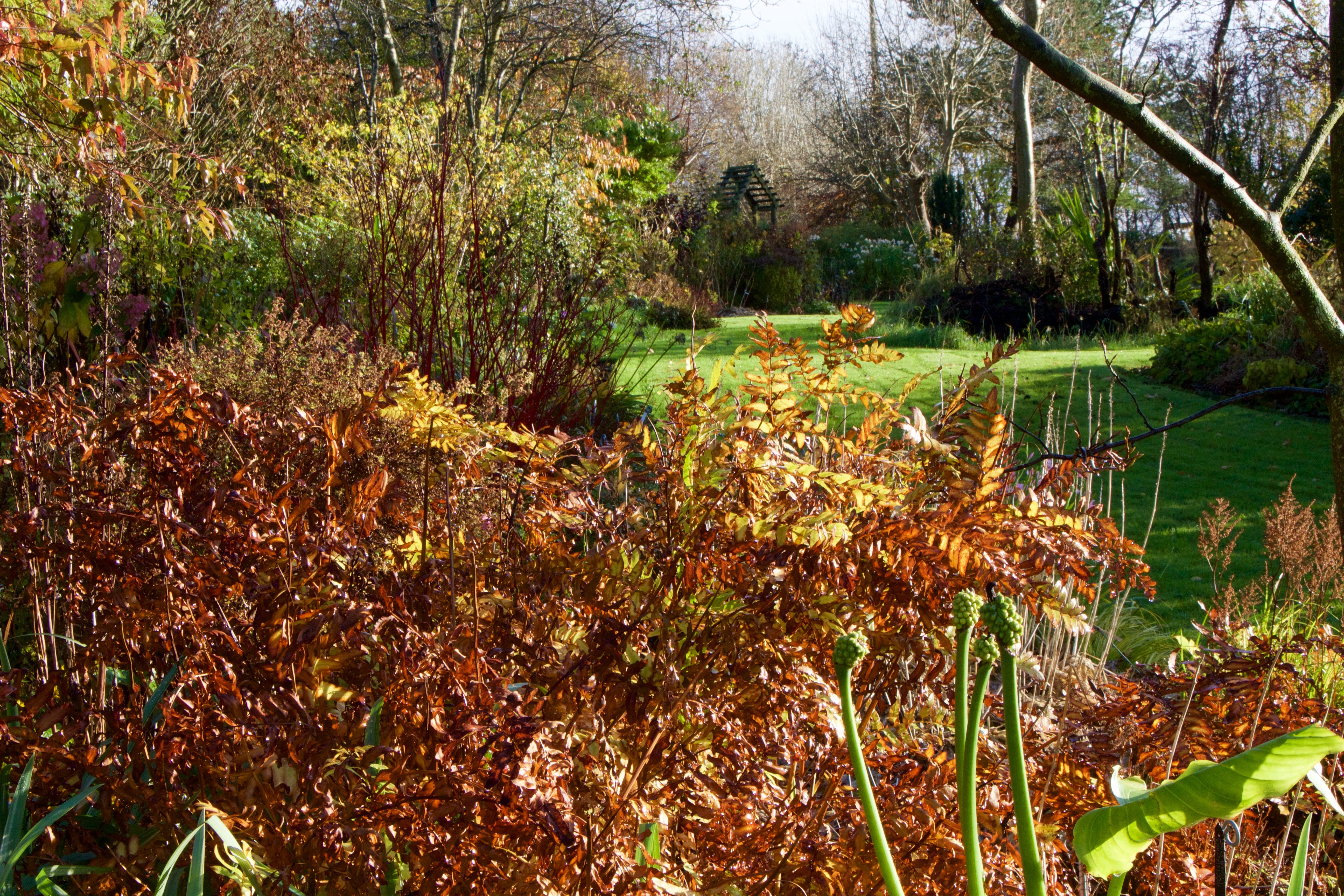Osmunda regalis
Approx. 0.5 litre pot
About this cultivar:
Osmunda regalis is a tall, deciduous, fern which usually occurs on moist bluffs and ledges and along streams (sometimes growing in the water. Typically grows in clumps to 2-3 feet tall, but with constant moisture can reach over 6 feet in height. Broad fronds have large, well-separated pinnae (leaflets) which give this fern an almost pea-family appearance. Fronds typically turn yellow to brown in autumn, which looks magical if you ask me (see photos).
The fantastic looking spores are located in brown, tassel-like, fertile clusters at the tips of the fronds and are another beautiful reason to have this plan tin your garden
Specific epithet means royal or of outstanding merit.
The name "royal fern" derives from its being one of the largest and most imposing European ferns. The name has been qualified as "old world royal fern" in some American literature to distinguish it from the closely related American royal fern, O. spectabilis. Has the RHS Award of Garden merit.
- Position: Full shade, partial shade
- Soil: Almost any soil, grows well in Ballyrobert
- Flowers: -
- Other features: Grows well in Ballyrobert, Woodland Plant, Dappled Shade or Full Shade Loving, Interesting Foliage or Fruit, Royal Horticultural Society Award of Garden Merit (RHS AGM)
- Hardiness: H6 - Hardy in all of UK and northern Europe (-20 to -15°C), Fully hardy - grows well in Ballyrobert!
- Habit: Tufted, Clump forming
- Foliage: Deciduous
- Height: 60 - 200 cm (2 - 6.5 ft)
- Spread: 60 - 150 cm (2 - 5 ft)
- Time to full growth: 5 to 10 years
- Plant type: Herbaceous Perennial, fern
- Colour: Green
- Goes well with: Shade
About this genus:
Osmunda is a genus of primarily temperate-zone ferns of family Osmundaceae. Five to ten species have been listed for this genus. Because of the large mass of sporangia that ripen uniformly at the same time to a showy golden colour, the ferns look as if they are in flower, and so this genus is sometimes called the ‘flowering ferns’.
Genus name supposedly honours Osmundus or Asmund, c. 1025, a Scandinavian writer of runes who helped prepare the way for the Swedish acceptance of Christianity. Another theory isthe name Osmunda possibly derives from Osmunder, a Saxon name for the god Thor.......or combining the Latin os (= mouth) and mundus (= clean), as it was reputedly used to clean the mouth.
According to Slavic mythology, the sporangia, called "Perun's flowers", have assorted magical powers, such as giving their holders the ability to defeat demons, fulfil wishes, unlock secrets, and understand the language of trees. However, collecting the sporangia is a difficult and frightening process. In earlier traditions, they must be collected on Kupala night; later, after the arrival of Christianity, the date is changed to Easter eve. Either way, according to mythology, the person wanting to collect Perun's flowers must stand within a circle drawn around the plant and withstand the taunting or threats of demons.....
According to science however.....Osmunda evolved in the ancient southern continent of Gondwana. The remnants of Gondwana make up about two thirds of today's continental area, including South America, Africa, Antarctica, Australia, and the Indian Subcontinent. A permineralized fossil rhizome of fern was discovered in Early Jurassic (Pliensbachian) lahar deposits in southern Sweden! So it is one way of bringing the past into the present!
In the garden they make an selection for wet areas along ponds, streams, water gardens or in bogs. Also grows well in shaded borders, woodland gardens, wild gardens or native plant gardens.

